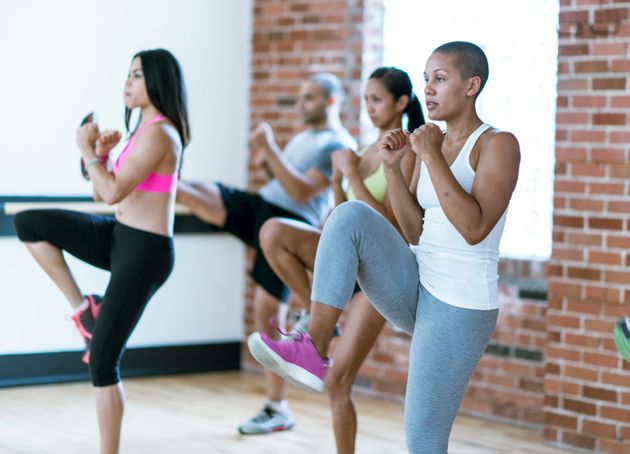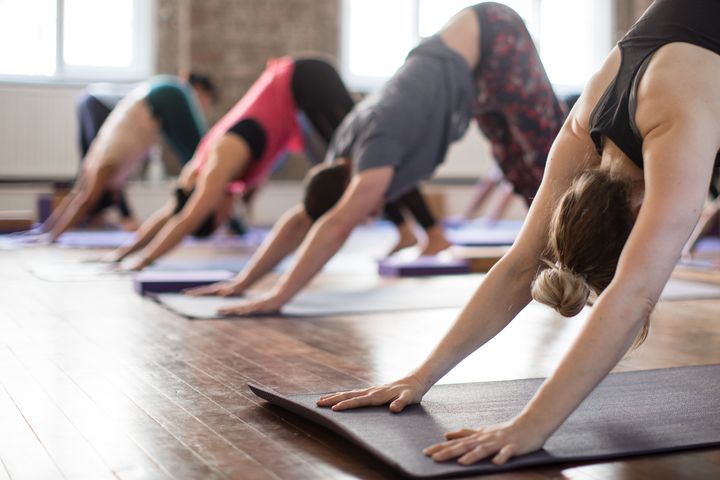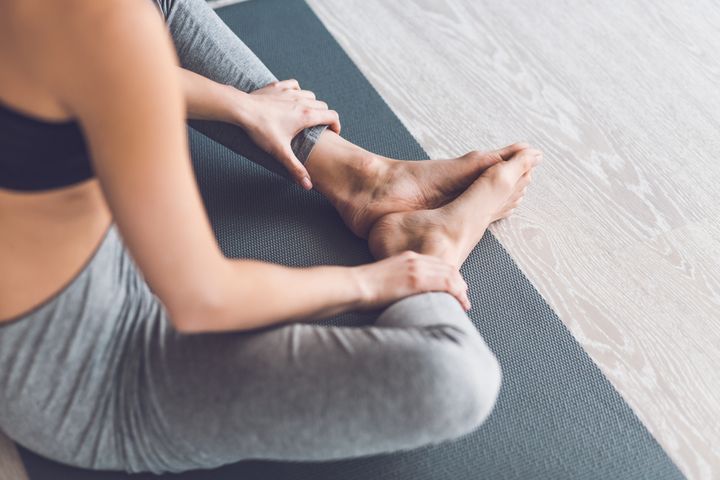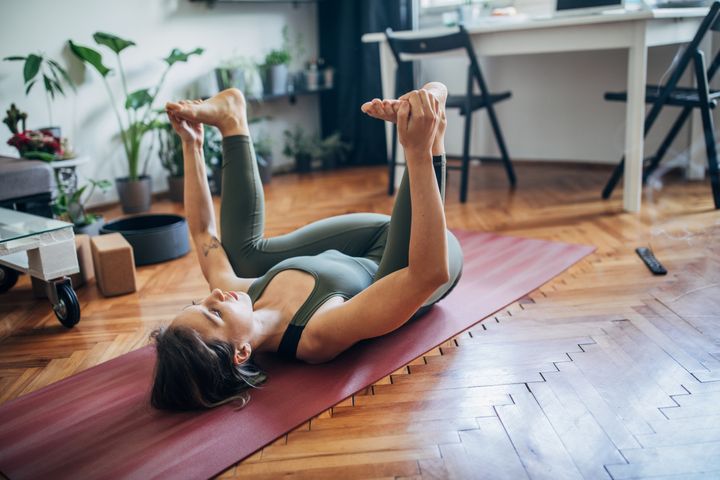A group fitness class is a wonderful way to get out of the house and treat your body to some healthy movement. But it’s also important to be respectful of others who are doing the same.
“A lot of us enjoy group fitness classes as much-needed ‘me time,’” said Nick Leighton, an etiquette expert and co-host of the Were You Raised By Wolves? podcast. “But it’s actually not ‘me time.’ It’s ‘we time.’ And so you need to be mindful of the fact that you’re not alone and other people are also trying to enjoy the class, too.”
To help make instructor-led group workouts a better experience for everyone, HuffPost asked Leighton and other etiquette experts to share some common faux pas ― and advice for avoiding them. Read on for 11 rude behaviours.
Advertisement
Arriving late
“Arrive a few minutes early to find your spot and be sure you are ready when the instructor is ready to start,” advised Jodi R.R. Smith, president of Mannersmith Etiquette Consulting.
You disrupt the class when you get there late, so some studios even have late-arrival policies. Don’t assume they’ll make an exception for you. Be mindful if you might have to leave early as well.
“Plan to stay to the very end,” Leighton said. “But if you do need to leave the class early for some reason, a front row yoga mat isn’t for you. Take a spot closest to the door that’ll minimise the disruption.”
Chatting with your friends during class
Attending a fitness class with your friends can be an enjoyable activity, but that doesn’t mean it’s the right time to socialise.
Advertisement
“Make lengthy small talk after or before class,” advised Diane Gottsman, an etiquette expert, author of Modern Etiquette for a Better Life and founder of the Protocol School of Texas. “Talking over the instructor during the class is rude, as well as distracting.”
Hogging the water station
Most fitness studios offer water stations to keep people hydrated. Refrain from taking more than you need, however.
“When filling up your water bottle before class, ask yourself if you’ll really be drinking 128 ounces in the next hour or if maybe you don’t actually need to fill up your entire gallon-size jug while a long line of people forms behind you,” Leighton said.
Keeping your phone on
Ideally, you can keep your phone in a locker or otherwise stow it away during class. But if you need to have it in the room with you, don’t keep the volume on!
“Nothing kills the vibe faster than someone’s phone going off,” Leighton said. “If you need to keep an eye on your phone during class, keep it on silent and take a spot in the back of the room closest to the door if you need to make a quick exit to take a call.”
Advertisement
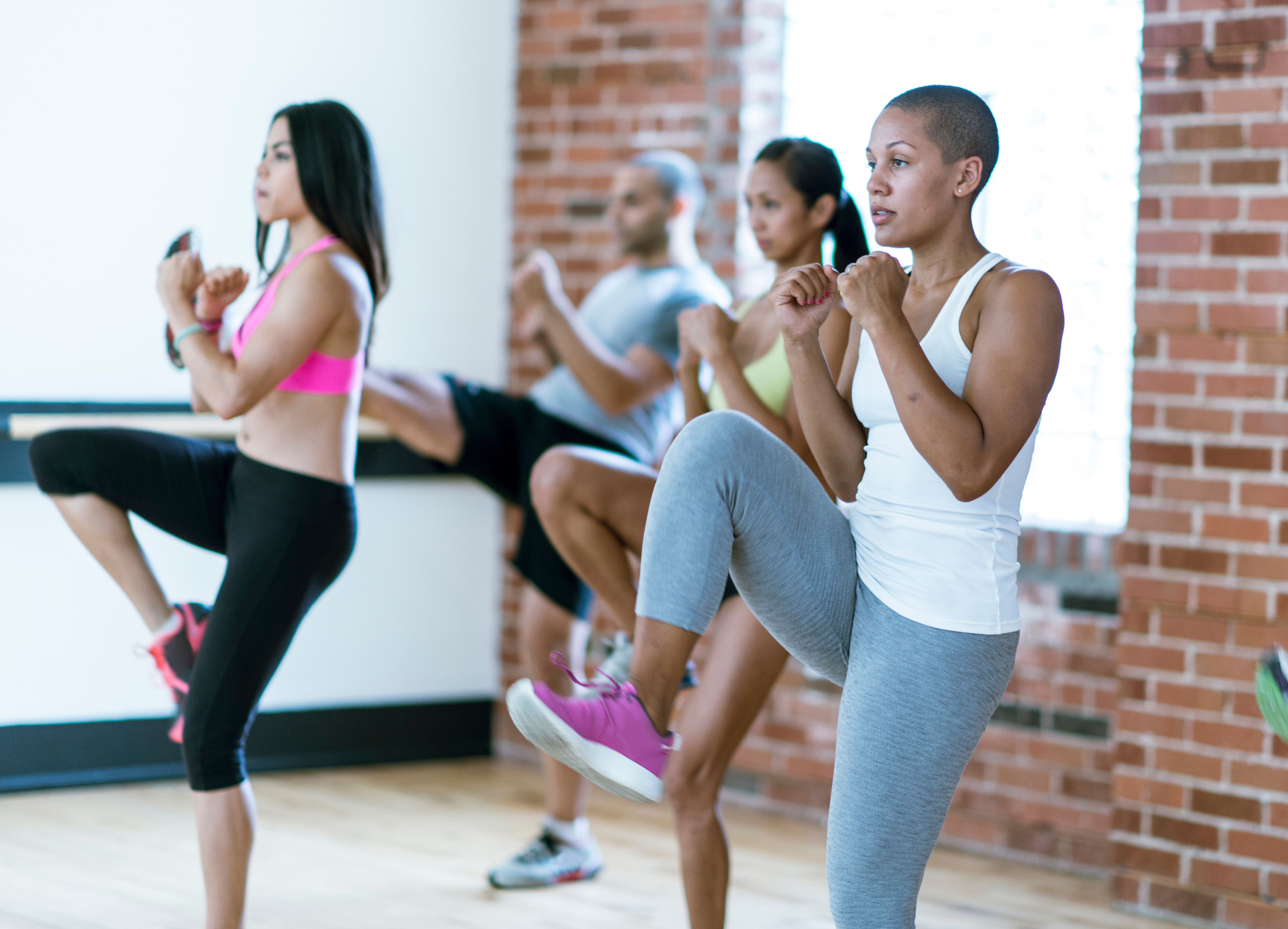
FatCamera via Getty Images
Saving spots for your late friends
“Don’t put down towels or mats to hold space for someone who is running late,” Gottsman said. “Chances are they aren’t going to arrive at all and someone else will miss a prime spot.”
Smith similarly advised against “saving” spots or machines for your friends at the gym, especially since space is often limited.
“Many gyms now assign locations to avoid this ongoing issue,” she noted.
Monopolising the instructor’s time
Remember that a group fitness class is different from a personal training session. Don’t use everyone’s workout time to have your own conversation with the instructor.
“Asking questions about form or to avoid injury are acceptable,” Smith said. “Monopolising the instructor’s time is not.”
Advertisement
Not being mindful of space
“Your participation should not overtly impact others,” Smith said. “Yes, there are times to cheer, sweat, and move, but excessive grunting, sweating, or bumping into others’ space should be avoided.”
Be mindful of the studio’s size as you move around ― and even as you prepare for class.
“Here in New York, especially in winter time, our studios aren’t often big enough for everybody plus their gym bags plus their coats,” Leighton said. “Bring just the essentials into the studio whenever possible.”
Sporting offensive slogans
People’s workout clothes and water bottles often have words on them ― and you should be mindful about what might be printed on your gear.
“Be aware of any slogans on your workout wear,” Smith said. “Avoid pictures and/or slogans which could be offensive to others ― racist, homophobic, Islamophobic, antisemitic, or even fatphobic images are best avoided.”
Ignoring the instructor’s movement
Gottsman pointed to the importance of trying to follow directions as closely as possible ― at least within reason.
Advertisement
“While you are encouraged to exercise at your own pace, doing something completely different means you might be better in a different group,” she said. “In other words, people behind you often follow your lead and doing a samba instead of a downward dog shows you are not closely aligned with the class you chose.”
Not wiping down equipment
Before you leave, you’ll need to wipe down the mats or pieces of equipment you were sweating all over, unless the studio tells you otherwise. This is one important way to show consideration to the people in the next class.
“In busy venues, be sure to gather your belongings, wipe down any equipment and exit quickly to allow the next class to begin on time,” Smith said.
Being unsupportive of others
“This is not middle school,” Smith emphasised. “Bodies come in all shapes and sizes. And people attend classes at all levels of fitness. Endeavour to be inclusive and supportive.”
Even if you’re a regular at a particular class and feel more comfortable, don’t forget to be friendly to everyone.
Advertisement
“People tend to make friends with people in their fitness class, but don’t leave out new people who are joining,” Gottsman urged. “If you see them struggle to find the location for equipment or look like they might have a question, reach out and offer help.”

